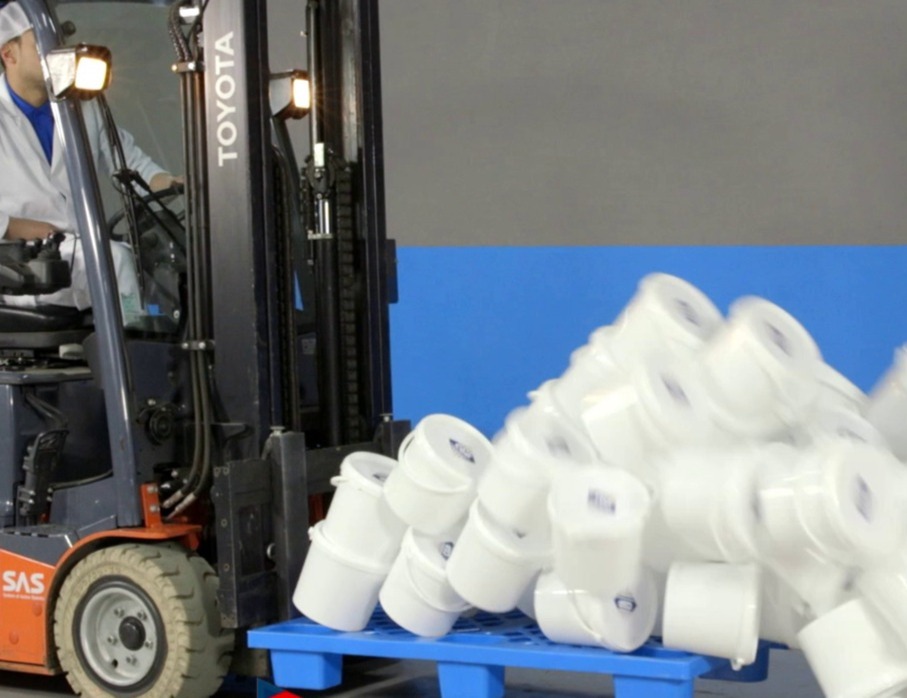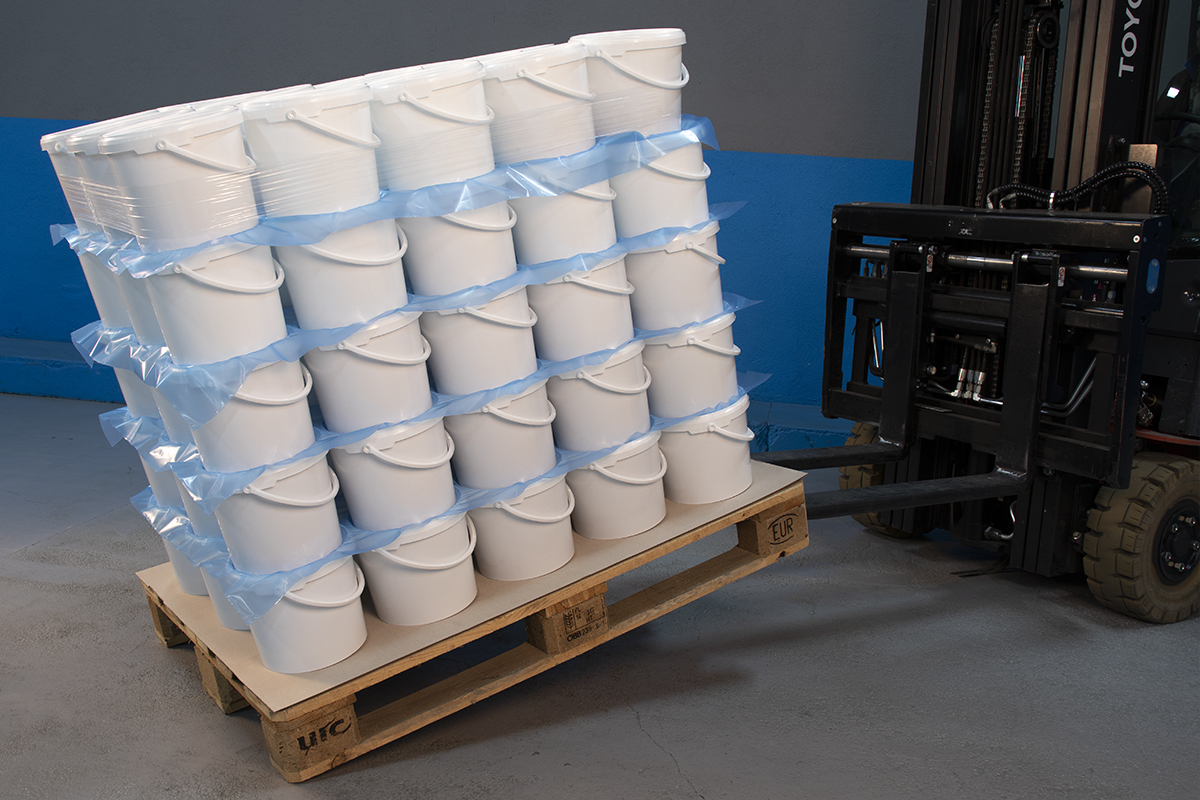As with all packaging that comes into direct contact with food, care must be taken to avoid the hazards associated with its storage and transportation, soas toprevent any risk of contamination. To do this, you need to understand what the specific hazards are, why and how external contamination could occur, and how to guard againstcontamination incidents.

NON-SLIP PALLET INSERT
Pails designed to contain foodstuffs are made of food-grade plastic. They consist of a round, oval or rectangular container, a hermetically sealed lid, an anti-opening ring and, sometimes, a protruding handle.
Their circular shape, protruding handle and fragile lid seal make palletizing complex.
WHAT ARE THE DANGERS OF STORING OR TRANSPORTING FOOD BUCKETS?
Plastic buckets are suitable for packaging powdered, paste or liquid foodstuffs. They are often used for packaging: food ingredients, culinary preparations, sauces, condiments, dairy products, animal feed, sweets, etc.
What are the risks of contamination?
- By container migration
Made from food-grade plastic, the materials used are selected for their suitability for direct food contact. Migration tests are carried out to define which product is suitable for packaging in the container, under which storage conditions (temperature, hygrometry) and for how long. A migration test must be carried out for each food family.
- By premature opening
Food buckets are made of rigid plastic. The strength of this material is calculated according to the load it contains and the stacking load it must support.
If a container is dropped, the lid may be punctured, cracked or leak. This is why these products should never be dropped on the ground or knocked onto pallets.
WHY AND HOW CAN EXTERNAL CONTAMINATION OCCUR?
The transportation of these food pails can be complex. The buckets are placed on pallets suitable for contact with foodstuffs:
- Either in slippery plastic
- Or in wood protected by a slippery plastic pallet foot.
The buckets are stacked on several levels, from 2 to 10, which makes them very unstable. So, to avoid instability, you need to limit the height of your pallets.
HOW TO AVOID BREAKAGE WHEN TRANSPORTING THESE PLASTIC BUCKETS?
3 simple steps to take:
- Prevent the pallet foot from slipping.
- Create cohesion between the stacks formed to guarantee the stability of the whole.
- Ensure that plastic packaging is suitable for direct food contact.
If you’d like to hear from a market leader, and find out how to stabilize and optimize the pallet with a highly anti-slip interleaf film.
Eliminate costly and complex packaging.
Contact our experts to find out more.

